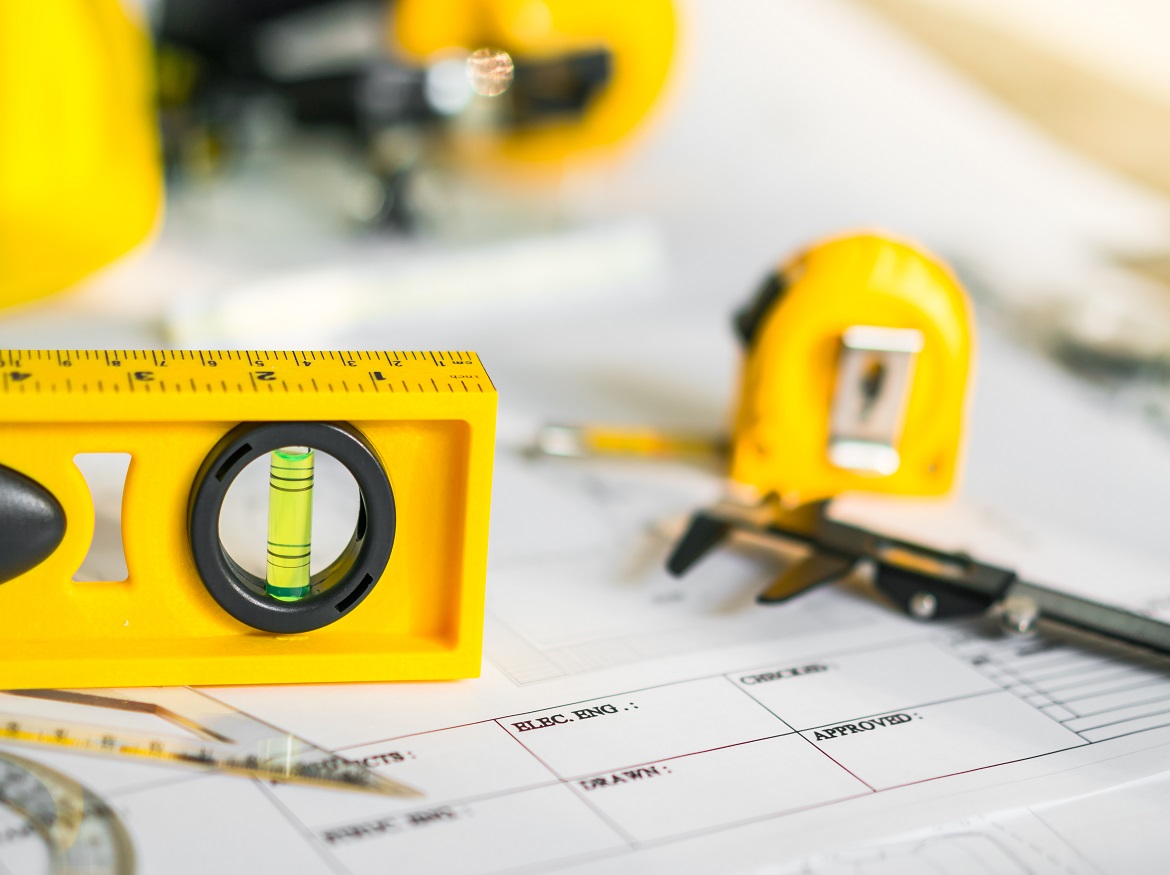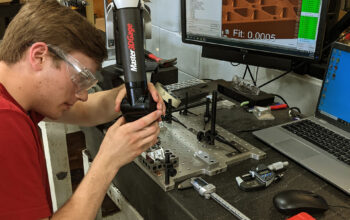Precision Measurement Tools for Manufacturing
For all kinds of manufacturing applications, Mitutoyo has made a commitment to producing high-quality, reasonably priced measurement tools since 1938. The industry standard for calipers and other measuring instruments nowadays is Mitutoyo.
Manufacturing tolerances are getting much closer together than they ever were. As a result, the need to maintain and raise the quality of the products is driving up the importance of being able to measure properly. Data bias and variation are minimized to continuously reduce variability, an important notion in quality improvement. Correct measurement techniques help to reduce any human bias that could skew measurement results. Never forget that low-quality results from unreliable data. One of the main problems Mitutoyo Calipers tries to solve is how to make measurement data more reliable.
Calipers and Units of Length
The characteristics of a human limb served as the basis for the standard units of length throughout history. The cubit, which is measured from the flexed elbow to the tip of the middle finger, replaced the foot as the standard unit of length in ancient Egypt. The fathom (across the outstretched arms) is still in use today. Although not very exact, these units were widely available to everyone—rich or poor—and they functioned adequately until the industrial revolution necessitated precise, consistent, and accurate measurement.
Many scientists and philosophers in France had come to believe that the fundamental unit of length must be derived from a physical constant in order for its magnitude to be invariant for all time by the time of the French Revolution in 1789, one of the most turbulent and chaotic periods in recent history.
Ironically, it was discovered that the modern unit of length, the meter, is only twice as long as the old Egyptian cubit when the meter was ultimately defined, following an epic seven-year voyage by two French astronomers who measured the distance from Dunkerque to Barcelona by triangulation. The unit of length created by man, the meter or yard, reflects his scale. The problem, however, is not the length itself but rather its lack of acceptance.
The declaration “for all time, to all peoples” would be referred to as a mission statement today if it were made with the intention of promoting the meter as the standard unit of length. The benefits of Imperial units should not, however, be ignored. The actual size of 1 inch and its multiple 12 inches, as well as fractions such as 1/4 and 1/8, are helpful.
The Search for a Measurement Standard
Following Sir Isaac Newton’s (1642–1727) death in the eighteenth century, France gained ground over England in the fields of mathematics, geometry, philosophy, and other sciences. Intellectuals and scientists in France were debating the necessity for a new unit of measurement based on a physical constant long before the French Revolution.
One thoughtful suggestion was to make the length of a typical pendulum the new unit’s definition. However, because a pendulum’s period is determined by gravity, its length will vary slightly from one location on Earth to another, especially as latitude increases. Although it was suggested that 45oN latitude may be utilized as a reference point, this suggestion was rejected as a result. Instead, it was decided to define the new unit as being equal to one ten-millionth of the length of a quadrant of the earth that is between the north and south poles, measured along the Paris meridian. The French Academy of Sciences officially approved this unusual astronomical scale definition, and its members also gave it the name Mètre and decided it would use the decimal system.
The word for the measure in Latin and Greek, Metron, inspired the Academy to use that name. To calculate its size, one quadrant of the earth’s surface had to be measured from a location in the tropical Atlantic Ocean to the freezing wastes of the Arctic. By measuring only a portion of this quadrant, specifically the distance between Dunkerque and Barcelona, it was possible to overcome the apparent challenges this provided. The longest land-based meridian through Paris runs between these two sites, which are both at sea level. In truth, Casini de Thury and La Caille had already conducted a comparable measurement (from Dunkerque to Collioures) in 1739–1740 when building the first accurate maps of France, but the Academy hoped for even better precision this time by utilizing the most up-to-date tools.
A toise is a little over six feet, so after surveying this section, the data was extrapolated to calculate the so-called Great Arc and corrected for Earth’s slightly oblate spheroidal form. The result of 5,132,430 toises was then divided into 10,000,000 equal parts to define the new unit, but whether or not the public would accept it was another matter because Napoleon brought back the old units, leaving the meter on the verge of extinction before it had hardly gotten off
Birth of a Measurement Standard: The Egyptian Cubit
The fathom, a measurement of length that has been used in many civilizations since antiquity, is most likely derived from the length of rope that a man can hold between his outstretched hands. The length of an outstretched palm, measured from the edge of the thumb to the tip of the middle finger, was another measurement unit known as the shaku that had its roots in ancient China and had moved to Japan. These examples serve to highlight the idea that historically, all length standards were based on the average male body size because everyone had access to it and could use it as needed.
A strong Pharaoh’s bent elbow and the tip of his middle finger were separated by an antique cubit. Even without the ability to read hieroglyphs, it is obvious which characters and symbols stand in for this unit. The cubit, which is roughly 500 mm long, is broken into 28 parts, and each part becomes about 18 mm, a known unit with a clear sign, which was then divided into 2, 3, 4, and 16, which seems to be the smallest graduation.
Strangely, but it is true, the new unit of length turned out to be roughly twice as long as the ancient cubit when the meter was determined by a natural constant with two astronomers surveying the area to estimate the circumference of the earth. The cubit might have been the current unit of measurement if they had divided the Great Arc into twenty million pieces as opposed to just ten.
What Is a Caliper and How Are They Used?
Calipers are all-purpose tools, whether they are Vernier, Digital, or Dial. They gauge depth, the interior, the exterior, and even steps. Everyone who needs to take measures, such as dentists, scientists, archaeologists, mechanics, machinists, chemists, and anthropologists, uses calipers. Calipers occasionally endure hard handling due to their wide range of users and extensive applications. Due to this, the majority of caliper jaws undergo heat treatment and are typically toughened to 62HRC or higher.
Modern calipers are almost always made of flame-hardened stainless steel, which is enough for daily use. However, these calipers may still deteriorate when measuring extremely tough or abrasive workpieces like grinding wheels and cutting tools made of cemented carbide. By providing jaws with the highest level of hardness, tungsten-carbide inserts in the jaws significantly increase the useful life of calipers.
The versatility of dial calipers is on par with that of their vernier equivalents, with the extra advantage of being simpler to read due to the significant mechanical scale magnification, which can be as high as 100 to 1. Resolution.001 inches; nevertheless, because of the intricacy of the necessary moving parts, this kind is typically more expensive than the vernier calliper and is susceptible to swarf and dust contamination. .001 inch of uncertainty (0–6 inch range).
The internal jaws may additionally include carbide inserts. Inserting a disc-shaped lapping stone between the jaws and removing material until parallelism is restored will allow you to straighten out bent outside jaws (without carbide inserts). Jaws can be heated and bent back into place from the inside.
Calipers and the Vernier Scale: The Most Versatile of All Gauges
A calliper is arguably the ideal all-purpose instrument to have in the toolbox due to its various measuring modes, simplicity of use, durability, large measuring range, and relatively inexpensive cost. A calliper, however, is not Abbe’s Principle compliant by design, so caution must be taken while using one if precision is to be maximized. The essence of Abbe’s Principle is that there is a possibility for inaccuracy if the measurement axis is not coaxial with the measuring scale axis. To a significant extent, the impacts of this concept can be prevented by adhering to a few straightforward procedures.
How to Read a Vernier Caliper
A vernier scale is a tool that enables the reading of an evenly split straight (or circular) measurement scale at a far higher resolution than the smallest divisions of that scale. These are divided using a vernier scale, an additional scale that slides up against the primary scale. The French mathematician Pierre Vernier (1580-1637) created this invention in its current form.
There is no mechanical magnification like there is on a dial calliper, therefore reading the vernier calliper, especially the metric kind, requires good vision or a magnifying glass. Given that the scales are on slightly different levels, parallax inaccuracy is another element that must be avoided.
On a standard metric device, each division on the vernier scale, which is attached to the calliper’s slider, is 0.02 mm shorter than a main scale division which is 1 mm. This implies that as the calliper jaws open, each movement of 0.02 mm aligns the following vernier scale line with a main scale line and so marks the portion of the main scale division that needs to be counted in 0.02 mm units. The divisions on the inch vernier scale are.001 inches shorter than the two divisions of the main scale, which has divisions spaced.025 inches apart. By doubling the graduation spacing, this feature makes the scale simpler to see while maintaining the same basic idea and resolution of.001 inch.
How to Read Dial Calipers
The versatility of dial calipers is on par with that of their vernier equivalents, with the extra advantage of being simpler to read due to the significant mechanical scale magnification, which can be as high as 100 to 1. This type, however, is typically more expensive than the vernier calliper and is susceptible to swarf and dust contamination because of the complexity of the moving parts required.
How to Read Digital Calipers
Conventional digital calipers count the light and dark bands under the slider as they move down the track, using a simple binary scheme. The system solely relies on storing the number of bands crossed over; it is unable to determine the location of the slider from the patterns on the track. Because of this, it is necessary to close the jaws and set the display to zero right away once a digital calliper is turned on and before taking a measurement in order to reset the binary system before it begins counting the bands.
This digital calliper reading system seems burdensome because the vernier calliper design can read any point within its range without having to reset zero. The introduction of Mitutoyo’s ABSOLUTE digital calliper, which can read the slider location at any angle and at any moment, even after powering off, changed this. It does so without the need to reset zero. One school of thought holds that the best calliper is still the traditional vernier calliper, which is easy to use, affordable, and equally accurate as the most recent digital calipers. They cannot convert from inch to metric (and vice versa) effortlessly, cannot switch between absolute and incremental measuring modes, and can be difficult to read at times (especially the inch versions).
The digital calliper of the ABSOLUTE type combines the advantages of analogue and digital technologies. Three slider-mounted sensors and three precise tracks corresponding to those sensors are used by the ABSOLUTE digital calliper. The slider estimates its current absolute position as it moves by reading the location of the tracks beneath these sensors. This gets rid of the requirement to reset the calliper first and reduces the headache that comes with using traditional digital calipers.
Measuring Technique for Calipers
The jaws should be slightly opened before being shut. Spend no more than a few seconds checking each time you repeat this process, making that the display always reads zero. Zero setting is not needed if the calliper is an ABSOLUTE kind. Close the jaws, though, and check zero to be sure it’s working properly.
You can now begin taking measurements. Ensure that multiple measurements are made because the first one often yields subpar results. Up until the data starts to duplicate itself, keep measuring. In the example presented here, after the third try, this digital calliper begins to read the same data (73,88). The first and second readings can be discounted as being off.
A calliper measurement ought to take three to four seconds. To find the proper alignment against the work surface, the calliper must be moved about or aligned. Force must be used sparingly: touch the workpiece, step away, touch again, step away.
The smallest reading across multiple trials should, theoretically, indicate the correct outcome if the jaws and the workpiece are positioned appropriately; bigger readings indicate misaligned jaws. An operator should be able to verify 84,73—assuming it’s the right answer—by carrying out the measurement again. As it gets increasingly challenging to read values other than 84,73 after a few tries, people will quickly come to believe that 84,73 is the correct response and 84,75 is incorrect. The operator is not using the same measuring force if the calliper does not repeat. The correct outcome for a hand tool like this is produced by the handling method. Personal prejudice among operators may be as great as 50 m (.002 inch). With practice, it should fall down to zero.
Caliper Accuracy
Steps can be used to describe the calliper’s measurement accuracy, also known as instrumental error. When the jaws are closed, the first step for the 0-200 mm (0-8 inch) range displays a measurement error of 0,02 mm (.000 8 inches) for this range, which rises to 0,01 mm (.000 4 inches) for each additional 200 mm in range after that. Up to 1000 mm, this pattern persists.
However, if gauge blocks are used to set a dial or digital calliper to the value (or close to the value) of the dimension being measured, such as 150 mm, as shown in the example above, this drop in precision can be avoided. By adjusting the gauge blocks in this way, the calliper’s error of up to that point is effectively canceled out, and it is no longer off by plus or minus 0,03 mm. You would be justified in quoting an uncertainty (k=2) of 0,01 mm for a measurement close to the current reading of 150.00 at 150 mm. Since vernier calipers often cannot be modified, the same result would be obtained by noting and using a calibration correction value on subsequent tests.
If lengthy gauge blocks are not easily accessible, the setting standard bars for use with micrometers can be used to set to greater values. In order to calibrate any 300 mm calliper, for instance, a 300 mm standard bar is guaranteed to be within 0,007 mm (or.000 25 inches for a 12-inch bar) of its nominal size as purchased. Additionally, when utmost accuracy is desired, these bars have a calibration correction value to the closest micrometer marked on one of the insulators, which can be added to the nominal length.
Click on the following link Metrologically Speaking to read more such blogs about the Metrology Industry.









